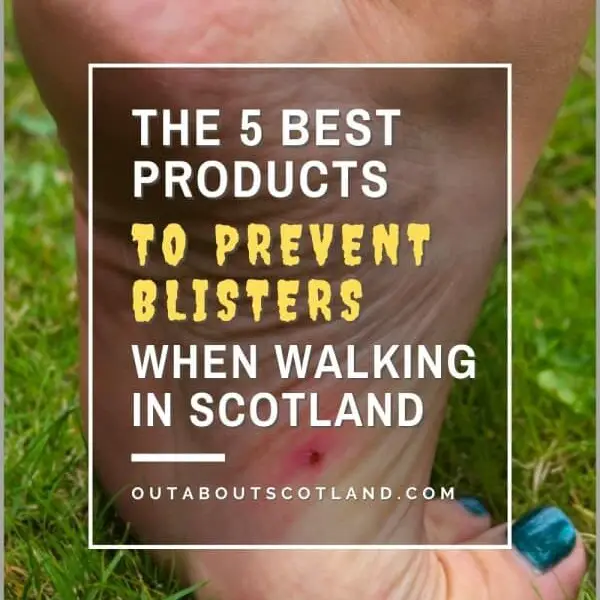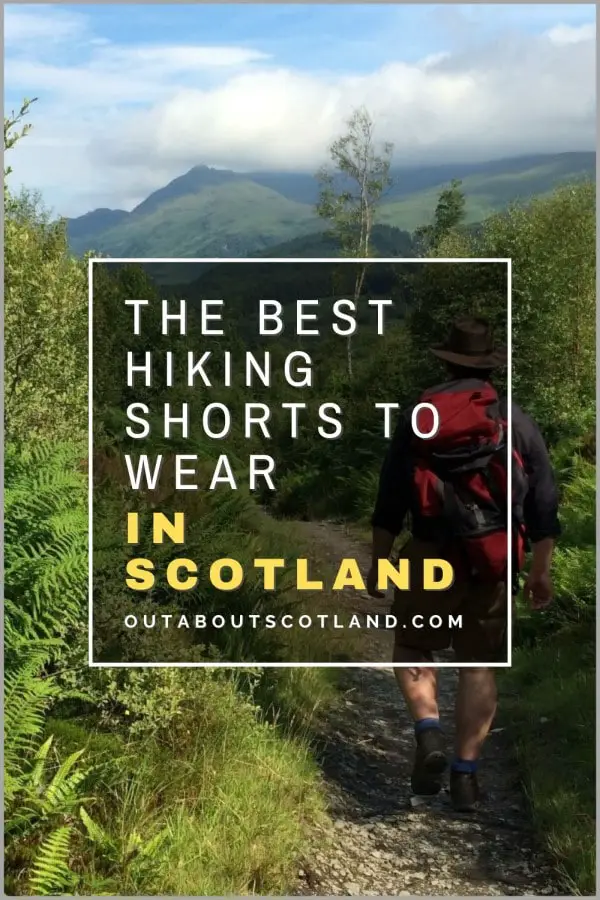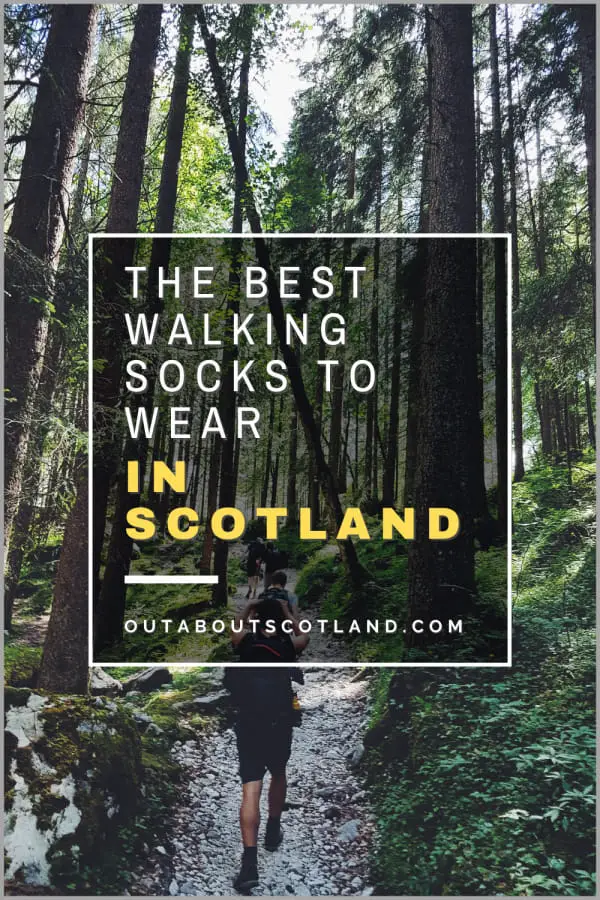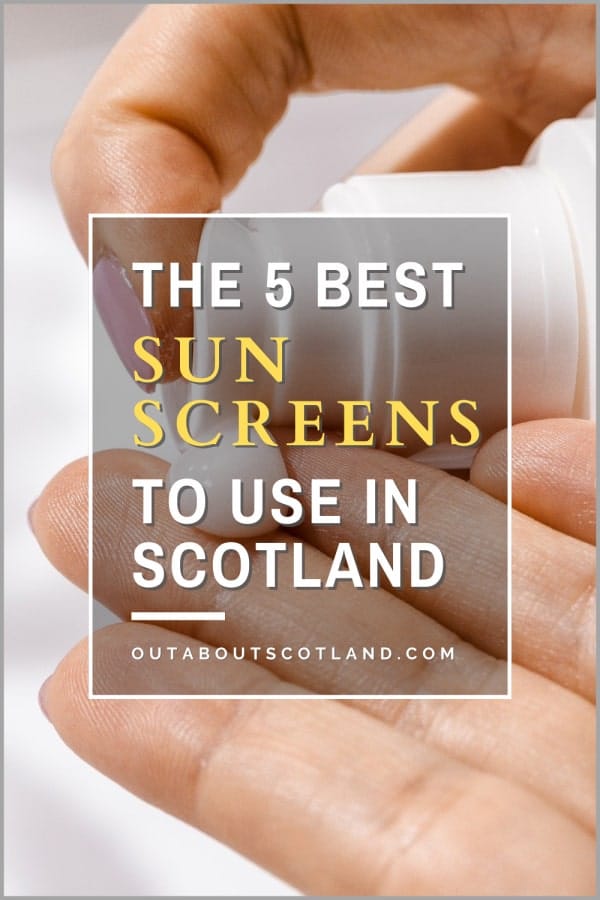Blisters are a potential problem for anyone who enjoys hiking in Scotland, as they can turn an enjoyable walk into a pain-filled nightmare. The most typical medical condition that causes them is friction to the foot’s skin as a result of the shoe’s toes, heels, and soles rubbing against one another. The blister develops to help the skin heal by forming a protective pocket of fluid between the torn upper layers of the epidermis.
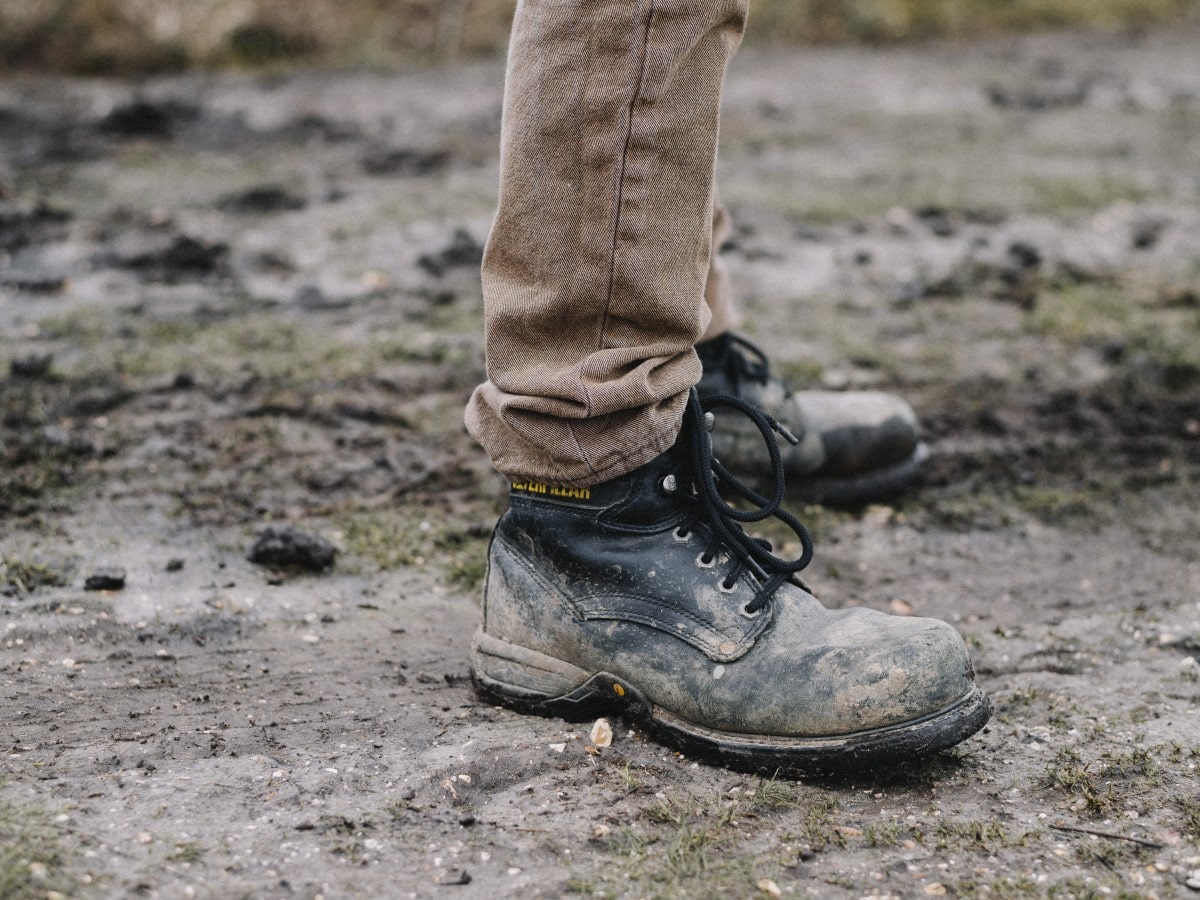
Unfortunately, the raw skin under this bubble of fluid can become very sore to the touch, and if the bubble bursts, there is a chance it can become infected. Thankfully, though, there are several very effective products that you can use to protect your feet from the ravages of blisters, most of which prevent the rubbing from occurring by adding a barrier between the foot and the shoe.
Discover the best products to prevent foot blisters in this guide, along with tips to help you reduce the likelihood you’ll get blisters the next time you go for a walk in Scotland.
In a hurry? If you don’t have time to read the reviews, follow the link below to purchase my #1 recommended blister prevention product on Amazon.
Recommended products for preventing foot blisters: Compeed Blister Patches
What Are Blisters, and How Do You Prevent Them?
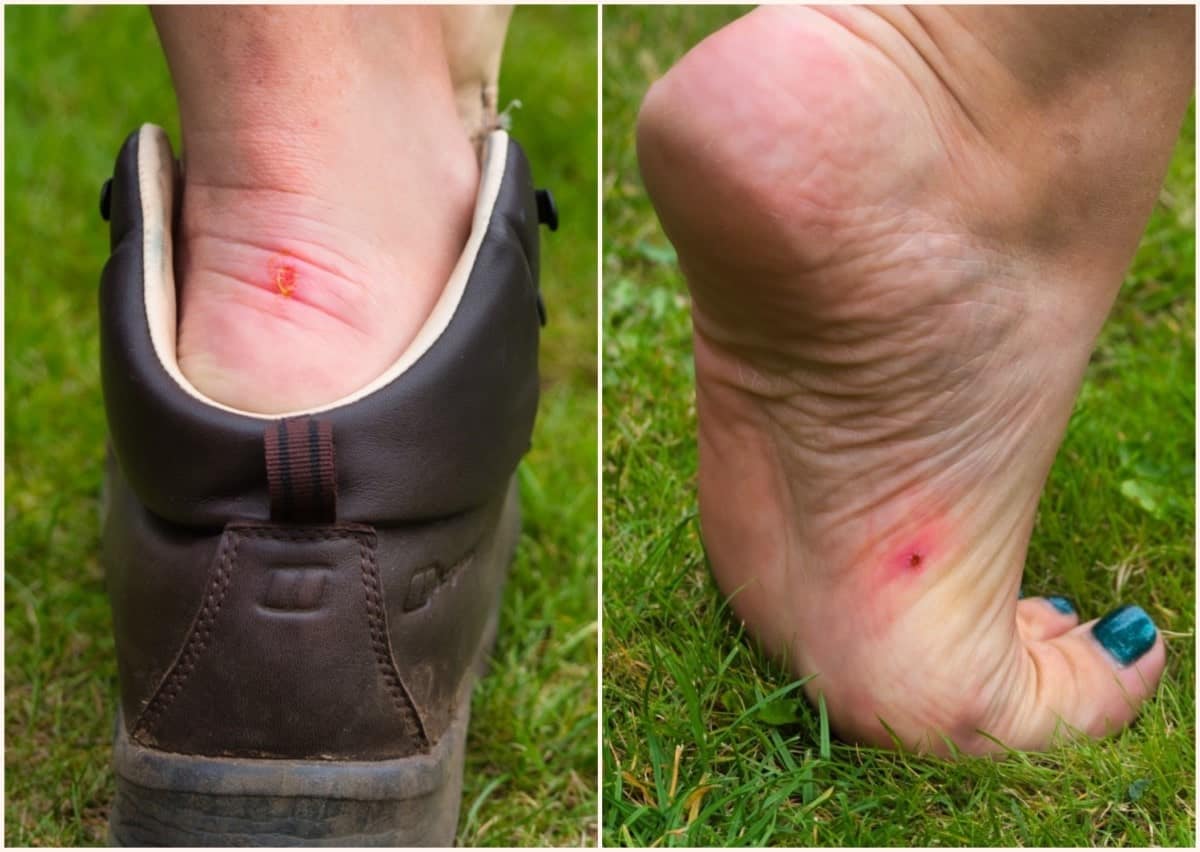
Getting blisters on your feet is one of the biggest annoyances you can have while visiting Scotland. We might have the best walking routes in the entire UK, but if you’re midway through a multi-mile trek through the back of the country and your feet are crippling you, the whole experience will be nothing short of a disaster.
I write this having returned from a fantastic week in the Morar peninsula that was somewhat marred on the last day when my other half ended up with a couple of very painful blisters on her feet caused by ill-fitting shoes, as you can see in the photos above.
Foot blisters, if you weren’t already aware, are most commonly caused by the friction of shoes and boots constantly rubbing against the sensitive skin on the feet, usually around the toes, the heels, and the soles, but they can basically appear anywhere there’s skin contact with another surface.
When you’re underway on a long hike, your feet are continually subjected to shear forces where the sock or shoe moves across the skin at a sideways angle to the soft tissues underneath.
Over extended durations, the friction caused by this movement creates a rupture between the outer layers of the epidermis which then forms a pocket of separated skin layers that fills with a plasma-like fluid from the surrounding tissues. This fluid – called serum – cushions and protects the layers of exposed skin and encourages new skin to grow.
After 2-5 days a new layer of skin grows and the bubble of fluid is reabsorbed into the body, after which the skin that contained the bubble dries up and peels off. So that’s the process of getting a blister, which probably doesn’t sound all that bad if you’ve never suffered from them, but if you have, you’ll know how painful they are and how much they can impact your walking adventures.
Planning a cross-country jaunt along the West Highland Way? Well prepare for a miserable time if you get blisters as while you could just press on and grin and bear it, if the bubble bursts there’s a very real possibility of developing an infection.
What to Put on Feet to Prevent Blisters
If left untreated, foot blisters can lead to sepsis and other life-threatening illnesses*
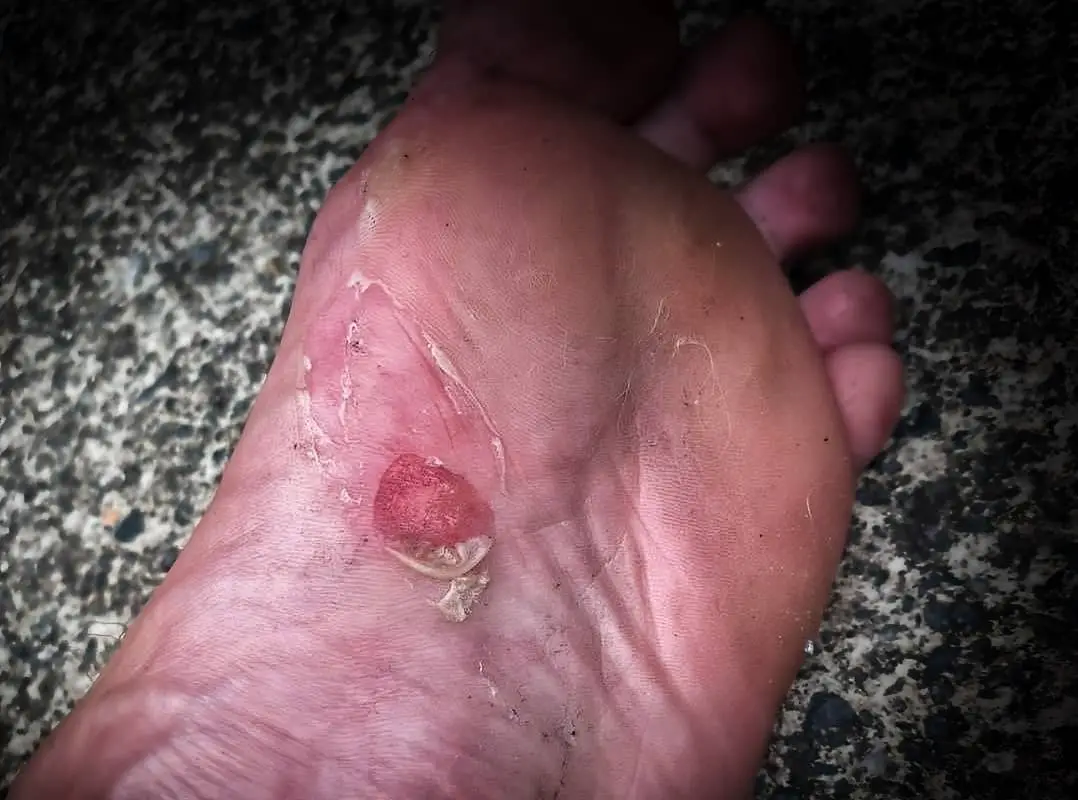
*https://www.healthline.com/health/infected-blister
So what can you do to reduce the discomfort of blisters on your feet? Well, quite a lot, actually. The best course of action is to take steps to reduce the possibility of getting them in the first place, but if you do end up getting one or two the following products should help no end.
Because it’s such a common condition an entire industry has sprung up to combat blisters and there are a variety of aids to protect your feet, from sticky plasters to creams and powders, but they all basically do the same thing which is reduce the friction between your skin and anything rubbing against it.
There are so many brands of foot care products it’s difficult to know where to start, but here in the UK the company Compeed has long been the go-to for long-distance walkers.
Their blister patches are an absolute must-have to keep in your backpack, as not only do they cover the blisters with a sterile layer, but they also provide cushioning so that you can continue your walk more or less comfortably thanks to the sticky layer that stays glued to the skin long after traditional plasters would have peeled off.
You can even use them as a preventative measure by applying them to parts of your feet that are most susceptible to friction, and unlike zinc oxide tape they won’t stick to the inside of your socks – which goes a long way to explaining why Compeed Blister Patches are rated as one of the best blister treatment products on Amazon.
By the way, I’ve created a guide about the best socks to wear while hiking in Scotland which you can read here: The 5 Best Walking Socks.
Top 5 Best Blister Prevention Products
Compeed Blister Patches
Best Blister Care Product
Before I discovered these things I was a firm believer in supermarket own-brand plasters mainly because plasters are so expensive and they all do the same job, right? Well, no, they don’t, and my faith in cheapo plasters disappeared completely after a friend recommended Compeed, which is superior in every possible way, which is why I now happily recommend them to everyone.
First, they magically stick to your skin no matter how much walking you do, which is something you’ll only really appreciate if you’ve ever had a blister on a sweaty foot that prevents a normal plaster from staying on for more than 3 seconds. Ok, that’s a bit of an exaggeration, but you get my drift.
Second, they contain a special hydrocolloid gel (which provides moistness) to encourage new skin growth and I have to say whenever I’ve had a blister they always seem to heal faster in a Compeed patch than when I just leave them open to the air, admittedly because whenever I do that the fluid bubble inevitably pops too early.
Third, I’ve now learnt that by placing these patches on my heel before I go for a walk I never get heel blisters in the first place, which my beloved Berghaus boots (link to my review) are prone to giving me. Sure, it means spending an extra couple of quid each time I go for a long walk, but they stay on for up to a week meaning one pair could last an entire holiday.
If you like to expose your feet (high heels etc) you’ll be pleased to know Compeed patches are semitransparent so once applied they’re barely noticeable, and if you’re covering up a pre-existing blister they have a deep cushioning layer which allows you to get on with your day when you’d otherwise feel every touch against the exposed raw skin.
Negatives? Well only one really, which is the price if you buy them from a high street chemist. That being said, Amazon have them in stock at a much cheaper price which works out at around £1 each if you get the version in the eco-friendly plastic-free box.
Compeed Anti-blister Stick
Best Blister Prevention Product
Another must-buy from Compeed, this anti-blister stick works perfectly alongside their patches as a complete blister solution. Unlike Compeed patches which are designed to help with blisters you’ve already developed, their anti-blister stick is designed to stop you from getting them in the first place.
It looks a bit like a big lip salve and works like a Pritt Stick where you rotate the bottom and the material pops out of the top. You then just rub it all over the parts of your feet that are prone to blisters, with the Compeed stick acting as a barrier between your skin and anything abrasive.
I’ve used it in the past and I 100% confirm it works as I never suffered with a blister whenever I applied it, and if it wasn’t for the fact that my current boots only give me a wee bit of chafing on the heel which I remedy with Compeed patches, I’d still use these sticks every time I go for a walk (I can’t give it a better recommendation than that).
Some people swear by wiping Vaseline on their feet instead which would certainly work out cheaper, but then you’d have greasy feet and socks all day, whereas Compeed anti-blister sticks are non-greasy and pretty much invisible.
One major benefit of this over the patches is that you can apply it in places where the patches won’t fit, like between your toes when wearing flip-flops, which is why I suggest getting both as they work together to protect different parts of your feet.
Kt Tape Blister Prevention Tape
Best Budget Blister Prevention Product
As previously mentioned, my first efforts at preventing blisters revolved around supermarket plasters, after which I moved onto zinc oxide tape which is much stickier and cheaper but tends to leak glue into the sock and crinkles up so it’s uncomfortable.
Mark III of the anti-blister plan was KT Tape, which is specifically designed to prevent blisters. It comes in a big roll of synthetic fibre tape, with each plaster being pre-cut, so you just peel it off and stick it on whichever part of your foot is most prone to chafing when you walk.
I’d say the material in these plasters is more durable than Compeed patches but they’re also more noticeable, so if you’re a lady wearing open shoes this probably isn’t the product for you. However, if you’re going to cover your feet with socks and walking boots they’re a great anti-blister option and they work out much cheaper than Compeed patches.
There are a couple of downsides,though. First, these plasters aren’t designed for use after you get a blister, so there’s no cushioning or sterile pad like you get with Compeed. Second, the glue doesn’t last as long as Compeed patches, and I generally got two days out of them before they peel off, although in the long run, these KT Tape plasters still work out as the cheaper option.
My advice for applying them is to first make sure your feet are completely dry and then really push them down hard once in position. If you like to sprinkle talcum powder over your feet, they’ll come off in about 30 seconds, so bear that in mind. They tend to crinkle when applied to the heel, but they’re fantastic for the metatarsal area (the bit behind your toes).
Ballotte Heel Protectors
Best Product for Heel Blisters
This product isn’t actually sold as blister prevention but is instead designed for alleviating the pain of plantar fasciitis. Think of the heel part of a sock that’s made from silicon but with little holes punched in to allow air to circulate. You pull them on like a sock and then pull your normal socks over the top so that the silicone provides a barrier between the skin of your foot and anything that touches it.
They’re supremely comfy and fit like a glove, and I’d say they’re probably the best product you can buy to prevent blisters anywhere on the back of your feet. The downside is that they prevent rubbing only to the back of your feet, so if you suffer from blisters on your toes these things are as useful as a chocolate teapot.
That being said, they won’t peel off like plasters and they won’t wear off like anti-blister creams and powders, and they also provide cushioning if you tend to put a lot of impact pressure on your heels.
It’s that last point that sees me purchasing new boxes of Ballotte heel protectors every month, as they’re great to use with running shoes, but note that your feet will get a wee bit sweaty if you wear them all day, and if you use them a lot, they’ll start tearing after a week or so.
Still, 15 quid for a month of comfy, blister-free heels is pretty good value, in my opinion.
Engo Blister Prevention Patches
Best Blister Prevention Product Not Applied to Skin
Not everyone likes applying plasters and creams to their feet, and sometimes you find yourself going for a walk having forgotten to pack any anti-blister treatments at all. Enter these clever little patches which fix directly into the insole of your shoe. There are four of them in the box and they stick on wherever you tend to develop blisters, whether it’s the tarsal or metatarsal area.
Each patch has a hard-wearing but very smooth coating so your foot doesn’t suffer from shear friction which is the biggest cause of foot blisters. Do they work? Absolutely, although with one caveat.
To fit them, you have to position the patch exactly on your insole in the location where it rubs, which is easier said than done. Unfortunately, the best way to find this out is actually get a blister so you can then take the insole out and position your foot on it to see where the patch has to go.
Once in position though, you can say goodbye to blisters. In fact, they’re so effective I suspect shoe manufacturers will eventually start including something similar in the soles of all their shoes.
Engo blister patches are marketed at runners and if you look at the Amazon reviews you’ll notice they’re all (mostly) very favourable so you can be confident in their ability, and having used them in the past they get a big thumbs up from me as well.
Downsides? Well, they don’t last forever so they’ll need replacing every couple of months, and if you get new boots or shoes you’ll have to get more blisters to know where you need to stick them. Once in place though, the convenience of these patches blows all other solutions out of the water.
How do You know if a blister is infected?
When the upper layers of skin on a foot are damaged through abrasion, the body’s response is to protect it under a sterile fluid-filled bubble. This we already know. The fluid acts like a bandage, preventing bacteria from entering the wound and reducing the risk of infection.
Problems occur when the bubble bursts and all the lovely, gooey liquid seeps out, leaving the exposed and undeveloped new skin vulnerable to all manner of airborne nasties.
Infected blisters are very painful and can become very dangerous if left untreated, as the infection can easily spread to other parts of the body. It can even turn into a life-threatening illness if sepsis develops. It’s not good when you’re on a long-distance hike, miles from the nearest chemist or medical centre.
So how do you know if a blister becomes infected? It’s sometimes difficult to notice the difference between an infected and uninfected one as even uninfected fluid bubbles can feel very sore and look red and inflamed, but there are a few tell-tale signs to be aware of.
Before doing any prodding and poking make sure your hands are thoroughly cleaned with soap and water and preferably give them an additional rinse with antibacterial gel. With your clean hands gently feel around the area and look for any signs that the skin bleeds when touched. You may also notice a degree of warmth around the blister and the skin might be peeling away.
Pus under the bubble, which frequently comes with a foul smell, severe pain, and swelling, are additional indicators of an infection. If you experience any of these symptoms, you must consult with your doctor as soon as possible.
For the infection to be diagnosed a small tissue sample may be taken after which they will likely prescribe antibiotics either in the form of an oral tablet or a cream or ointment that is applied directly to the affected area.
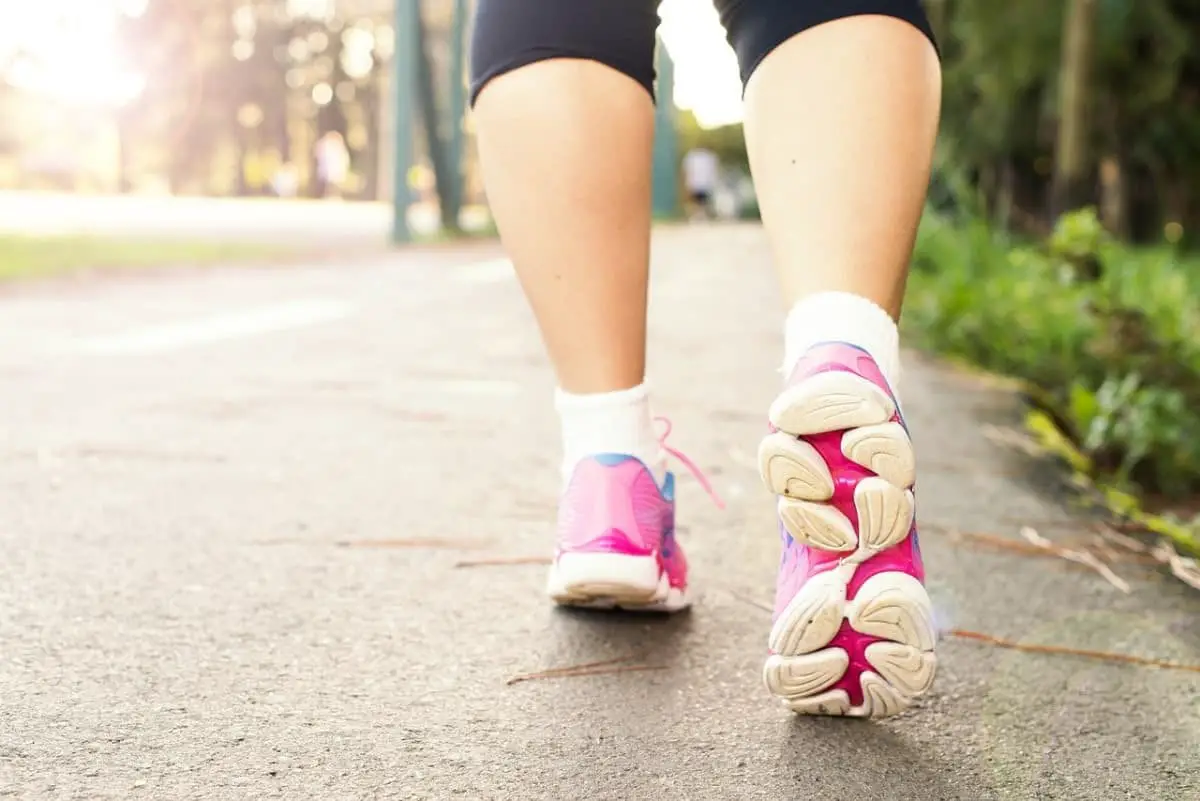
Should You pop or burst a blister?
I’ll start this section by linking to the NHS website blisters page so you can read exactly what the experts say you should do, which basically boils down to: DO NOT POP YOUR OWN BLISTERS. Personally, I would go with NHS advice above any other source of information on the internet, so if you’re not sure what to do, please bookmark the page in the link above.
Remember that the fluid that fills the blister bubble keeps infection at bay, so popping it yourself will prevent your body’s natural protection and you could introduce bacteria into the wound.
In addition, if you pop it before it’s ready you could extend the time the skin takes to regrow and if you use a makeshift tool you could leave scarring (true story – I know someone who cut open a massive but perfectly healthy blister with a penknife they’d previously used to pick a cow pat out of the soles of their boots).
If you feel the blister needs to be drained consult with your GP who will be able to release the fluid with a sterilized needle while keeping as much of the skin intact as possible. They will also cover the blister with a protective ointment and cover the wound with a dressing which will help prevent bacteria from entering it.
This dressing may need several subsequent changes with clean gauze and bandages, so if you change it yourself and notice the wound isn’t healing or is getting worse, make another appointment with your doctor to get it checked out.
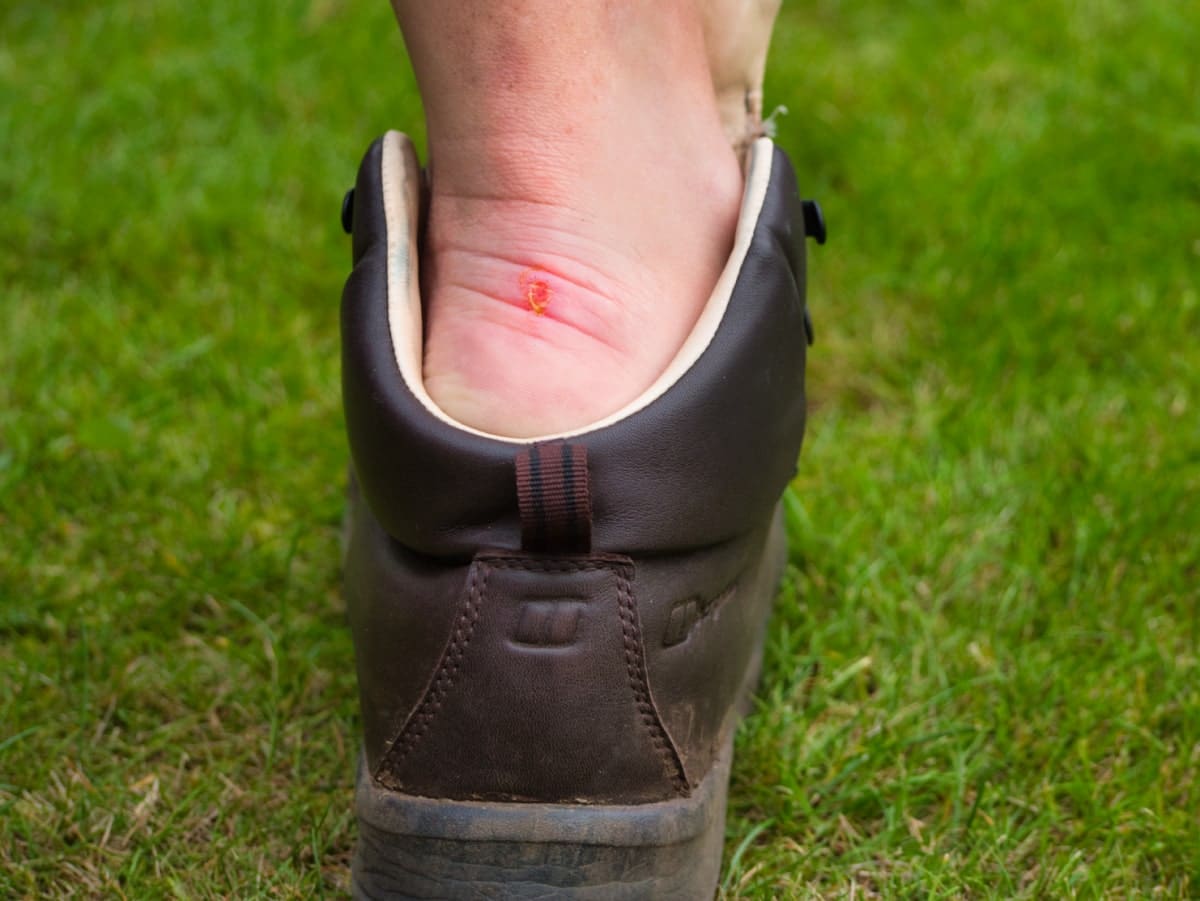
Blister Prevention Tips
1: One of the best ways to prevent getting blisters on your feet is to wear moisture-wicking socks such as Danish Endurance socks (Amazon link) which are made for long-distance runners but are equally useful for walkers thanks to the proprietary low-friction anti-blister cushioning built into the metatarsal area.
Stick a Compeed patch on your heel, rub Compeed anti-blister stick on your toes, and pull these socks on to virtually guarantee blister-free walks.
2: An alternative option for socks (but one I haven’t tested so can’t comment too much) is to dust your feet with talcum powder and slip on five-finger running socks which cover each toe like a pair of gloves. They’re a bit of a bugger to get on but they prevent toe blisters like nothing else. For added protection, wear a pair of normal socks over the five-finger socks.
3: As far as anti-blister cream for feet (and anti-blister powder) goes, Talcum powder and petroleum jelly (Amazon links) are two age-old products that have been used for years. Having used talcum powder (whenever I can be bothered to find the bottle) I can confirm it definitely helps.
If you’d rather have the convenience of a roll-on stick, then, from my experience, the Compeed anti-blister stick (Amazon link) is a good choice, as is the Glide Body anti-blister balm (Amazon link).
4: With regard to your shoes or boots, make sure they’re comfortable and neither too loose nor too tight. Spend the money and get the best pair you can afford and ensure the ball of the foot fits comfortably inside the widest part. The heel shouldn’t ride up and down when you walk and there should be at least half an inch from the end of your longest toe to the inside tip of the shoe.
5: If you feel localized heat in your foot when walking it’s usually the first indication that you’re about to get a blister. When you feel this hot sensation don’t just power on through the pain but instead stop, apply a plaster, adjust your socks and laces, and if your socks are sweaty make sure you change them out for a fresh pair.
6: If you have calluses from lots of walking don’t be tempted to pumice them off. They may be unsightly but the hardened skin is your body’s natural way of dealing with skin abrasions, and best of all they’re an anti-blister product that’s completely free.
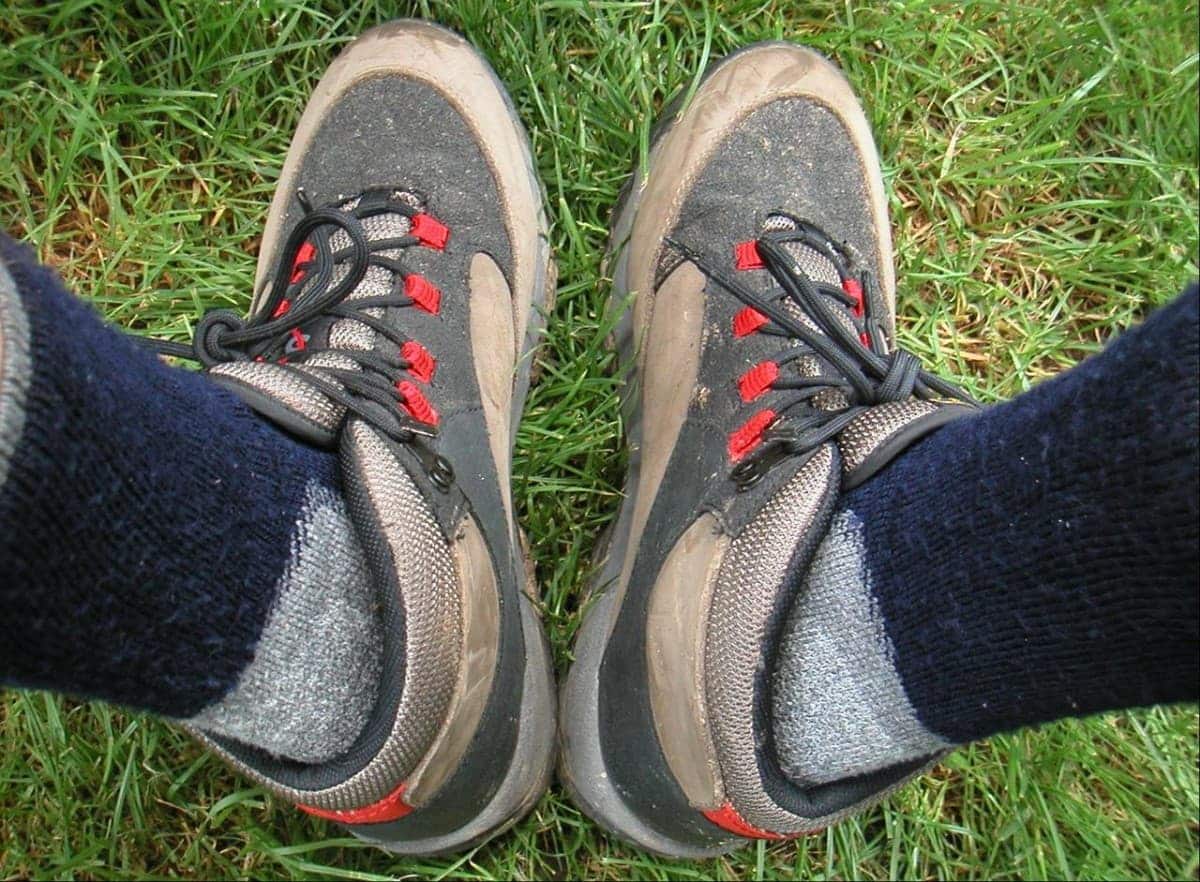
Conclusion
Blisters can cause untold misery to walkers, not just for the immediate pain they cause but also for the potential infections that can occur if bacteria manage to get inside the exposed wound. For this reason, it’s vital that the body is allowed to grow a new layer of skin and this is best done under the protective bubble of serum that the body creates over the damaged area.
There are several products designed to prevent this protective bubble from bursting, but one of the most highly rated is Compeed blister patches which not only provide a sterile barrier on top of the blister but also cushion it from further abrasion by shoes and socks.
Coupled with Compeed Blister Stick, it’s possible to take part in long-distance walks without getting a single blister.
These products have been designed with walkers in mind so they’re packaged in a way that’s easy to throw in a backpack and they have the added bonus that you can get them for a great price from online retailers like Amazon.
Note that all product reviews on this page are the opinion of Out About Scotland and your experience with these products may differ. This article is intended for entertainment purposes only and you are advised to consult a medical practitioner for all medical queries.
Frequently Asked Questions
What are blisters?
Blisters are bubbles of fluid that form under the top layers of skin when excessive friction causes the layers to separate.
The pocket of separated skin fills with serum from the surrounding tissues in order to protect the new skin growth.
What causes blisters?
Blisters are most commonly caused by friction, but they can also be caused by heat from burns or sunburnand when the skin warms up after getting an ost bite. When something pinches the skin, broken blood vessels cause a pool of blood to appear as blood blisters.
Is it better to pop a blister or leave it?
Official NHS advice is to leave the blister alone and let the skin underneath heal naturally under the cushioned layer of serum. If you feel the blister requires treatment, consult your GP.
What makes a blister go away?
Blisters will disappear on their own, usually within five days. The body’s first reaction is to cover the exposed separated skin with a sterile fluid which encourages new skin to grow.
When the skin has fully covered the wound the fluid will reabsorb into the body and the upper layer of skin will dry and peel away, exposing the new skin growth.

